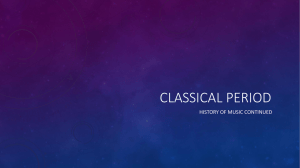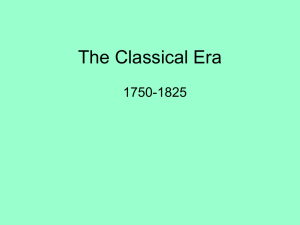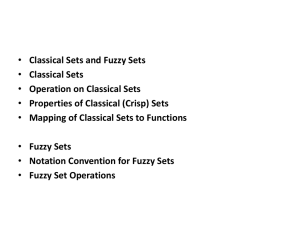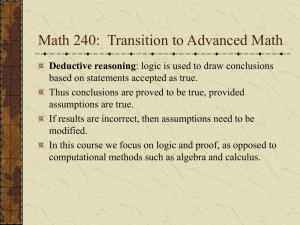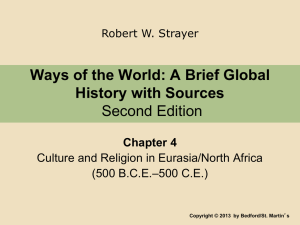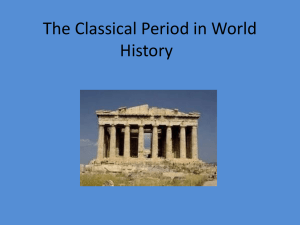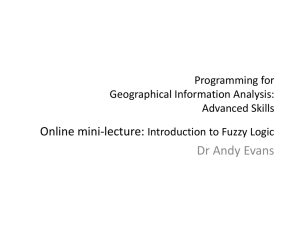CLASSICAL LOGIC and FUZZY LOGIC
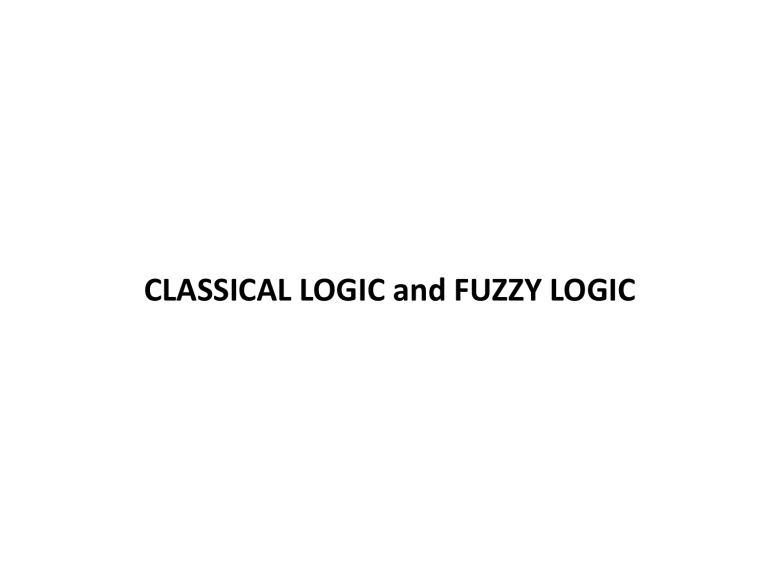
CLASSICAL LOGIC and FUZZY LOGIC
CLASSICAL LOGIC
In classical logic, a simple proposition P is a linguistic, or declarative, statement contained within a universe of elements, X, that can be identified as being a collection of elements in X that are strictly true or strictly false.
The veracity (truth) of an element in the proposition P can be assigned a binary truth value, called T (P),
For binary (Boolean) classical logic, T (P) is assigned a value of 1 (truth) or 0 (false).
If U is the universe of all propositions, then T is a mapping of the elements, u, in these propositions (sets) to the binary quantities (0, 1), or
T : u ∈ U −→ (0, 1)
CLASSICAL LOGIC
CLASSICAL LOGIC
L et P and Q be two simple propositions on the same universe of discourse that can be combined using the following five logical connectives
Disjunction ( ∨ )
Conjunction ( ∧ )
Negation (−)
Implication (→)
Equivalence (↔)
CLASSICAL LOGIC define sets A and B from universe, where these sets might represent linguistic ideas or
thoughts.
A propositional calculus (sometimes called the algebra of propositions) will exist for the case where proposition P measures the truth of the statement that an element, x, from the universe X is contained in set A and the truth of the statement Q that this element, x, is contained in set B, or more conventionally,
P : truth that x ∈ A
Q : truth that x ∈ B where truth is measured in terms of the truth value, i.e.,
İf x ∈ A, T (P) = 1; otherwise, T (P) = 0
İf x ∈ B, T (Q) = 1; otherwise, T (Q) = 0 or, using the characteristic function to represent truth (1) and falsity (0), the following notation results:
CLASSICAL LOGIC
The five logical connectives already defined can be used to create compound
propositions, where a compound proposition is defined as a logical proposition formed by logically connecting two or more simple propositions.
CLASSICAL LOGIC
Truth table for various compound propositions
CLASSICAL LOGIC
The
implication
P →Q can be represented in set-theoretic terms by the relation R ,
Suppose the implication operation involves two different universes of discourse; P is a proposition described by set A, which is defined on universe X, and Q is a proposition described by set B, which is defined on universe Y.
CLASSICAL LOGIC
This
implication
is also equivalent to the linguistic rule form,
IF A, THEN B .
Another compound proposition in linguistic rule form is the expression
IF A, THEN B, ELSE C
CLASSICAL LOGIC
Tautologies
In classical logic it is useful to consider compound propositions that are always true, irrespective of the truth values of the individual simple propositions.
Classical logical compound propositions with this property are called tautologies.
Tautologies are useful for deductive reasoning, for proving theorems, and for making deductive inferences.
CLASSICAL LOGIC
Tautologies
Some common tautologies follow:
Proof ?
CLASSICAL LOGIC
Tautologies
Truth table (modus ponens)
Truth table (modus tollens)
CLASSICAL LOGIC
Deductive Inferences
The modus ponens deduction is used as a tool for making inferences in rule-based systems. A typical if–then rule is used to determine whether an antecedent (cause or action) infers a consequent (effect or reaction).
Suppose we have a rule of the form IF A, THEN B, where A is a set defined on universe X and B is a set defined on universe Y. As discussed before, this rule can be translated into a relation between sets A and B;
CLASSICAL LOGIC
Deductive Inferences
Suppose a new antecedent, say A’, is known. Can we use modus ponens deduction to infer a new consequent, say B’, resulting from the new antecedent?
That is, can we deduce, in rule form, IF A’, THEN B’?
Yes, through the use of the composition operation. Since ‘‘A implies B’’ is defined on the Cartesian space X × Y, B can be found through the following set-theoretic formulation,
Deductive Inferences
CLASSICAL LOGIC
CLASSICAL LOGIC
Deductive Inferences
The compound rule IF A, THEN B, ELSE C can also be defined in terms of a matrix relation as where the membership function is determined as
CLASSICAL LOGIC
EXAMPLE
Suppose we have two universes of discourse for a heat exchanger problem described by the following collection of elements,
X = {1, 2, 3, 4} and
Y = {1, 2, 3, 4, 5, 6}.
Suppose X is a universe of normalized temperatures and Y is a universe of normalized pressures.
Define crisp set A on universe X and crisp set B on universe Y as follows:
A = {2, 3} and
B = {3, 4}.
The deductive inference IF A, THEN B (i.e., IF temperature is A, THEN pressure is B) will yield a matrix describing the membership values of the relation R, i.e., χR(x, y)
That is, the matrix R represents the rule IF A, THEN B as a matrix of characteristic (crisp membership) values.
FUZZY LOGIC
The restriction of classical propositional calculus to a two-valued logic has created many interesting paradoxes over the ages.
For example, the Barber of Seville is a classic paradox (also termed Russell’s barber). In the small Spanish town of Seville, there is a rule that all and only those men who do not shave themselves are shaved by the barber. Who shaves the barber?
Another example comes from ancient Greece. Does the liar from Crete lie when he claims, ‘‘All Cretians are liars?’’ If he is telling the truth, his statement is false.
But if his statement is false, he is not telling the truth. A simpler form of this paradox is the two-word proposition, ‘‘I lie.’’
The statement can not be both true and false.
FUZZY LOGIC
A fuzzy logic proposition, P
∼
, is a statement involving some concept
without clearly defined boundaries.
Most natural language is fuzzy, in that it involves vague and imprecise terms.
Statements describing
a person’s height or weight
or a
ssessments of people’s preferences about colors or menus
can be used as examples of fuzzy propositions.
The truth value assigned to P
∼ can be any value on the interval [0, 1]. The assignment of the truth value to a proposition is actually a mapping from the interval [0, 1] to the universe U of truth values, T , as indicated
FUZZY LOGIC indicates that the degree of truth for the proposition
.
the membership grade of x in the fuzzy set A
∼ is equal to
FUZZY LOGIC
The
logical connectives
of negation, disjunction, conjunction, and implication are also defined for a fuzzy logic.
FUZZY LOGIC
As before in binary logic, the implication connective can be modeled in rule-based form; and it is equivalent to the following fuzzy relation,
The membership function of R
∼ is expressed by the following formula:
FUZZY LOGIC
FUZZY LOGIC
FUZZY LOGIC
Approximate reasoning
The ultimate goal of fuzzy logic is to form the theoretical foundation for reasoning about imprecise propositions; such reasoning has been referred to as approximate reasoning [Zadeh, 1976, 1979].
Approximate reasoning is analogous to classical logic for reasoning with precise propositions, and hence is an extension of classical propositional calculus that deals with partial truths.
Approximate reasoning
FUZZY LOGIC
FUZZY LOGIC

